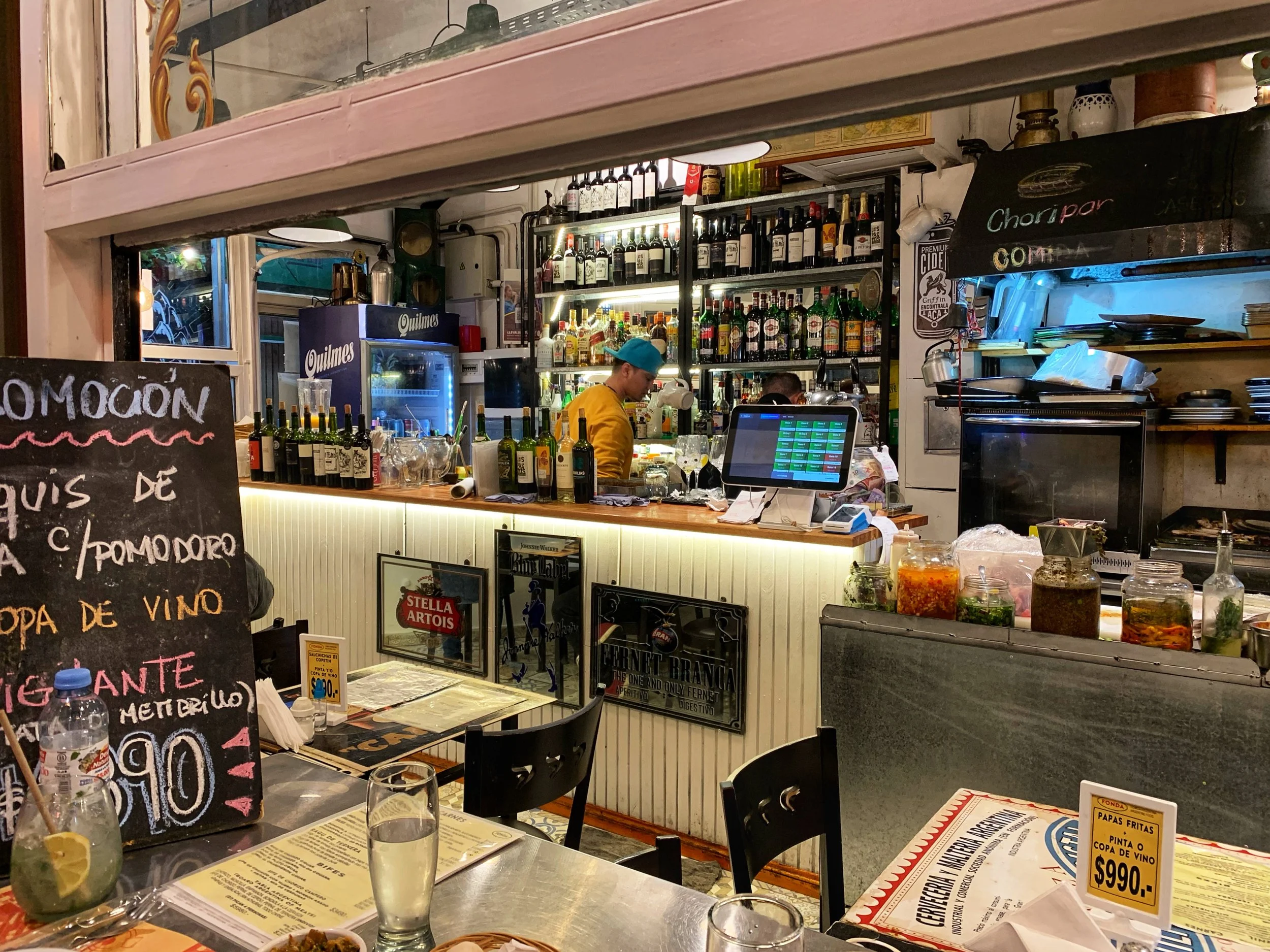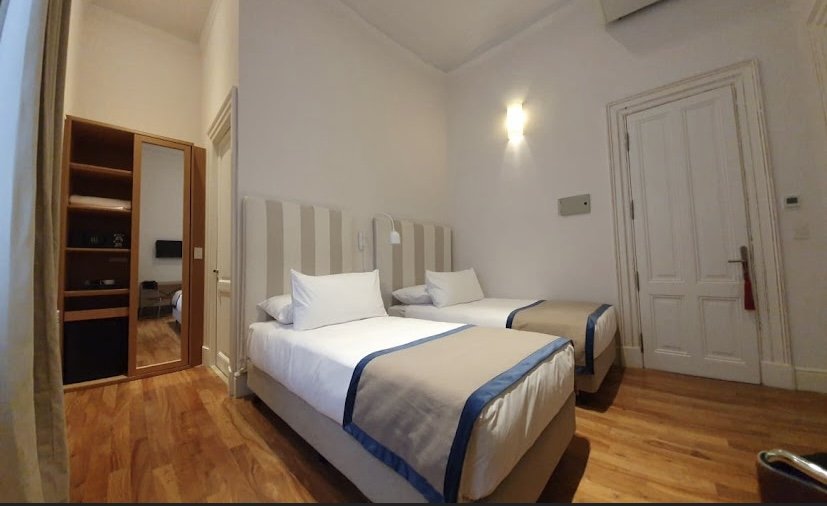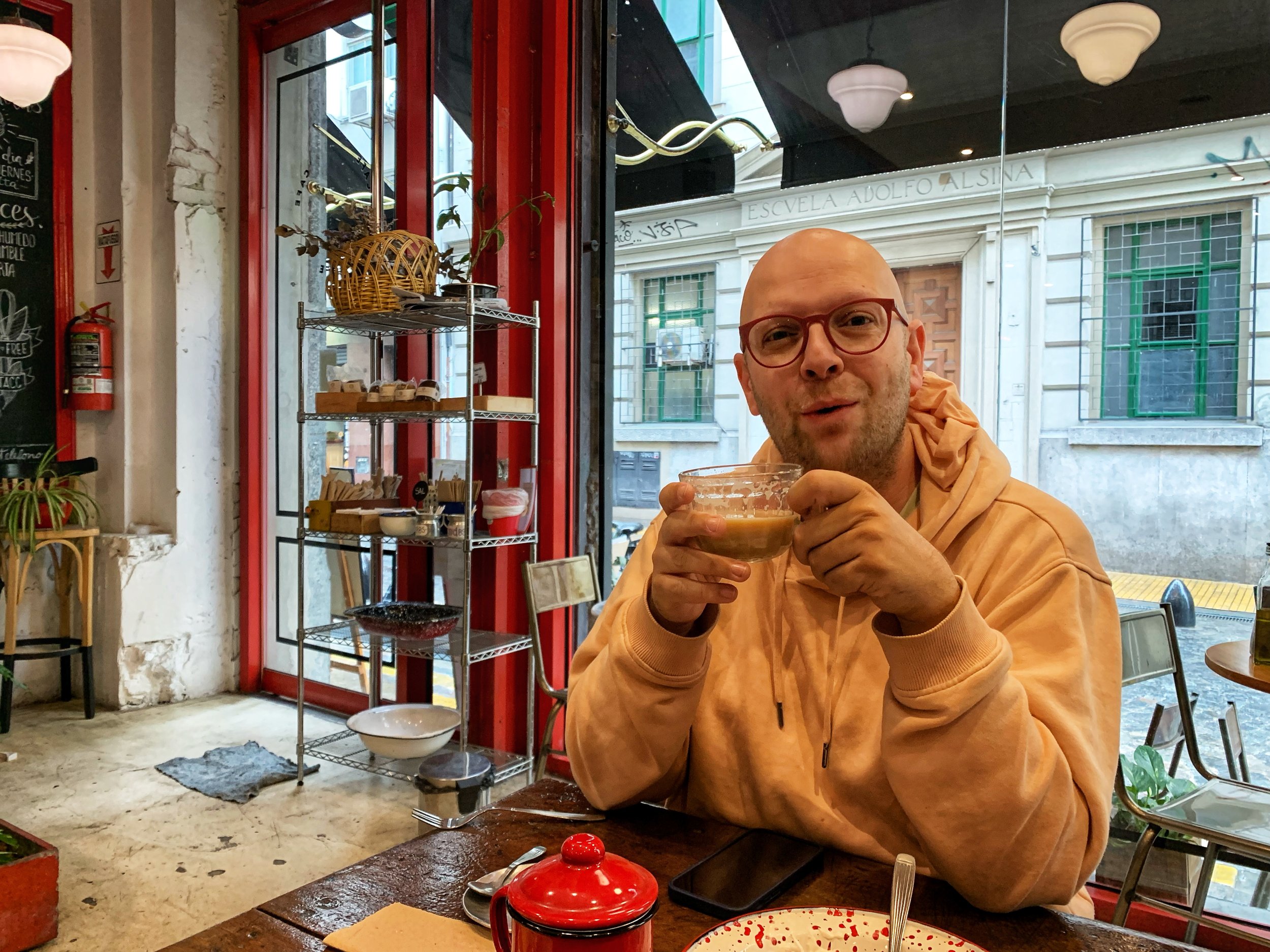Buenos Aires, Argentina
Buenos Aires highlights
San Telmo
La Boca
Palermo
Centro
Why visit Buenos Aires?
For a passionate, lively and cosmopolitan city, with a rich heritage and creative culture.
Getting there and around
We flew from Cusco to Lima with Viva in the afternoon and then from Lima to Buenos Aires overnight with Aerolineas Argentinas.
From Buenos Aires AEP airport we had arranged a taxi through our hotel which took 30 minutes.
We walked everywhere in the area around our hotel (San Telmo) and to and from the Centro area which was only a few blocks from our hotel.
To get further afield we decided to use the hop on hop off tourist bus. We usually turn our noses up at these buses as just too touristy for our taste, but we thought it would be a good way to see lots without having to walk miles.
The bus had headphones and an audio commentary in different languages. The buses were every 30 minutes and a ticket cost £25. The hop on hop off bus was not the cheapest or most efficient way of travelling but it did give us a good overview.
Data
We purchased an e-sim data package from Airalo which enabled us to access maps and use the internet without paying roaming chargers to our usual mobile provider. It cost £10 for for 3GB of data for a 30 day e-sim and worked well.
Money
The Argentine economy is in hyper inflation and dollars are highly sought after as a stable currency. It was more cost effective for visitors to exchange dollars into pesos and then pay in cash with pesos, than it was to pay with a credit/debit card or to pay in cash with dollars.
We brought crisp new $100 US dollar bills to exchange for Argentine pesos. Exchanging money was easy - there are dozens of kiosks / shops who are eager to swap your dollars for pesos, or many cambios on the street at Calle Florida. We exchanged at a kiosk recommended by our hotel.
By exchanging at the unofficial ‘blue rate’ it is possible to get almost twice as many pesos to the dollar as the official rate. A quoted hotel rate of 32,000 pesos therefore cost us £100 as opposed to the £190 we would have paid if we had exchanged money at the official rate or paid with our UK cards.
Note that since we visited, the situation has become much easier for tourists. As of December 2022 provided you use a Visa or Mastercard issued outside of Argentina, and you pay in local currency (pesos), you will now receive an exchange rate that is close to the blue rate (300 pesos to the dollar at the time of writing). This means you no longer need to bring dollar bills to exchange, you can just pay for things with a credit card.
Accommodation
We stayed in the Cassa Lepage hotel in the San Telmo area of Buenos Aires, a small new boutique hotel with 22 rooms. We stayed in a suite with two connecting rooms, at a cost of £800 for 4 nights (£100 per room per night).
The wi-fi was excellent and the historic character of the hotel well preserved. We loved the high ceilings and big wooden doors. The atmosphere of the hotel was serene and opulent. The breakfast wasn’t amazing and we skipped it after the first day.
The remodelling of this amazing building into a hotel revealed dozens of underground structures and remains dating to the start of the 17th century. The hotel incorporates an impressive exhibition of the archaeological finds.
We loved the location of this hotel, the layout and styling of our rooms, and the history of the hotel.
Our star rating: 4
Our cost rating: 4
San Telmo
Our hotel was located in the oldest barrio (district) of Buenos Aires - San Telmo, which is located just to the south of the Centro area and north of La Boca. We spent a lot of time in this area walking around, eating and shopping.
San Telmo dates to the 17th century when it was home to dockworkers. After infrastructure improvements the area attracted wealthier residents and a number of mansions were built. However the cholera epidemic of 1871 saw many residents flee. In the 20th century the area became home to many immigrants, and it now has a bohemian artsy vibe.
We love exploring urban neighbourhoods on foot and found San Telmo to be charming and extremely walkable. The cobbled streets and historic buildings were both beautiful and interesting and although it could do with better street lighting at night, we generally felt safe wandering around.
San Telmo has lots of shops and we particularly liked the art galleries such as Quorum and the ‘papelera’ (stationary shops). We picked up some cool postcards, zines, notebooks and mini prints.
Nica Distrito on the same block as our hotel was good for brunches and proper cups of tea.
The San Telmo indoor market is foodie heaven. Think Borough market in London meets the tapas bars of Barcelona. We feasted on a wide array of produce and meals here. We loved the chips at El Belga (and the stall’s chatty owners); the amazing vintage bars where huge sharing platters of different cuts of beef are served; and the tortilla papas and spicy pomegranate juice at De Lucia tapas bar.
On Sundays, the Plaza Dorrego and all the streets around host a huge flea market full of antiques, crafts, art and homeware. This was a vibrant place to hang out and soak up the atmosphere as we browsed the stalls and watched the world go by.
La Boca
From the hop on/off bus we saw the Boca barrio, home to the famous Boca Juniors football team, colourful buildings, and street art. We would have liked to walk around this area if we’d had more time.
Palermo
The hop on hop off bus took us past Retiro, the Plaza de Las Naciones Unidas with its Floralis Genérica stainless steel flower sculpture, grand palaces and museums, and on to the Palermo district.
We got off the bus at the Museum of Latin American Art and walked to the Japanese Garden. Sadly there was a really long queue so we had to skip the Garden and instead took the kids across the road to the playground at Plaza Alemania.
The Plaza Alemania is so called as it features a fountain monument gifted to Buenos Aires by Germany to celebrate Argentina’s May Revolution which kickstarted the country’s independence.
After walking through the Parque Tres de Fabero we got back on the bus at the Avenue del Libertado.
Centro
In the Centro area we saw more grand buildings and monuments including the Teatro Colon, the Obelisco. At the Plaza de Mayo is the Casa de Rosada, which is the presidential place and where Eva Perón gave her last speech.
We ate a delicious, albeit it expensive, steak lunch at Cabaña las Lilas - the best steak we’ve ever eaten.
We visited the glamorous Galerias Pacifico shopping mall full of gold, marble and reflective glass everywhere. There were lots of designer shops and luxury brands. We just window shopped!
The serene shopping mall was a world away from the streets outside where thousands were gathered for the dia de la lealtad (loyalty day). This gathering is a commemoration of 17 October 1945 when a massive labour demonstration at the Plaza de Mayo demanded the liberation of Juan Perón who was jailed at the time.
Final Thoughts
Overall our impressions of Buenos Aires were of an imposing, passionate and cosmopolitan city with tree lined avenues and grand architecture. It didn’t feel touristy at all, and we rarely came across English speakers, giving us many opportunities to practice our Spanish.
Buenos Aires was a fantastic city, with so much to see and do. We didn’t feel unsafe despite warnings on the internet about street safety, and really enjoyed wandering and getting lost.
We adored San Telmo, particularly it’s extensive street markets and places to eat. The narrow alleys and squares were romantic and intriguing and we much preferred them to the boulevards and apartment blocks of the Palermo and Centro areas.
We’d love to return to Buenos Aires to see more of Palermo, Recoleta and the Boca areas, and also to visit some of the city’s excellent museums and art galleries. The food in Buenos Aires was abundant and delicious and we left the city feeling very satisfied!














